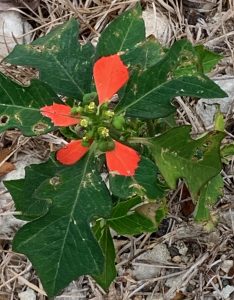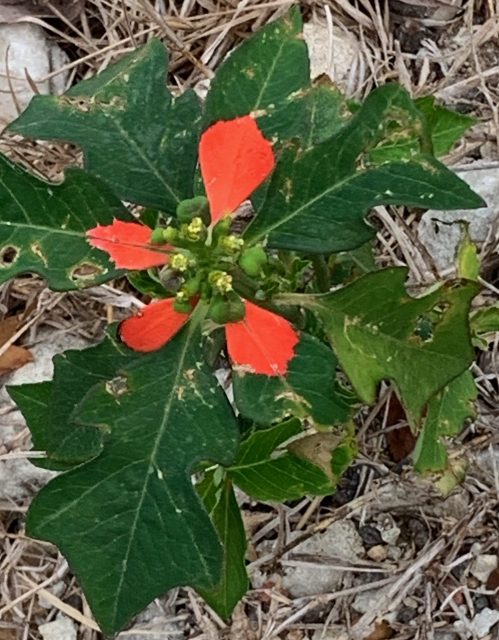Painted leaf, fire on the mountain, Mexican fire plant, Texas poinsettia, wild poinsettia. By whatever name you know it, Euphorbiaceae cyathophóra is a North and South American native and cousin to the commercially important December poinsettias that were first cultivated by the Aztecs.

Many euphorbia species have leafy bracts that change color. E. cyathophóra may not have the dashing scarlet brilliance of the commercial poinsettia, but just as stunning, the inner bracts turn vibrant red and appear as though an artist’s brush has just stroked the inner bracts that touch the flowers. The bracts don’t stay colored all year. The center flowers are yellow and produce a three-lobed fruit capsule. The yellow flowers bloom in all seasons in the Lower Rio Grande Valley.
Euphorbias have a toxic milky white latex sap that can cause skin and eye irritation in humans. Many mammalian herbivores avoid the plants because the sap can irritate the lining of their mouth and digestive tract.
Small bees and flies are attracted to the nectar and pollen. Caterpillars of the Sprague’s pygarctia moth feed on E.cyathophóra.


Leave a Reply